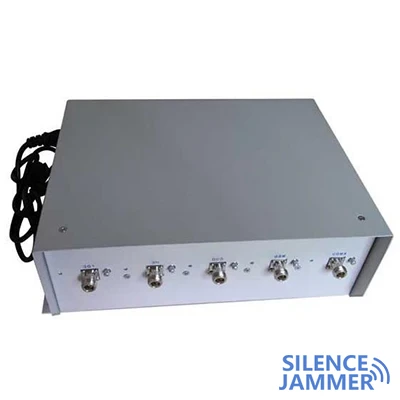In our daily lives, protecting personal privacy and information security is becoming more and more important. In addition to using cell phone jammers to ensure information security. As an electromagnetic shielding device, Faraday bags are widely used in life because of their ability to effectively shield various electromagnetic signals. So, can Faraday bags shield radio frequency (RF) signals?
What is a radio frequency (RF) signal?
Radio frequency (RF) signals refer to electromagnetic waves with a higher frequency range in the electromagnetic spectrum, usually between 3 kHz and 300 GHz. RF signals are widely used in various wireless communication devices, including mobile phones, Wi-Fi, Bluetooth devices, radio broadcasts, radar systems, etc. RF signals can be divided into multiple frequency bands according to different frequencies, such as low frequency (LF), medium frequency (MF), high frequency (HF), very high frequency (VHF), ultra-high frequency (UHF), etc.

Working principle of Faraday bag
The design of Faraday bag is inspired by Faraday cage, which is a closed space made of conductive materials that can effectively shield electromagnetic fields. The working principle of Faraday bag mainly includes the following aspects:
Conductive materials: Faraday bags are usually made of highly conductive materials, such as silver-plated fibers, metallized fabrics, aluminum foil, etc. These materials can reflect and absorb electromagnetic waves to form a shielding layer.
Multi-layer structure: In order to enhance the shielding effect, Faraday bags usually adopt a multi-layer structure. The inner layer is conductive material, and the outer layer is durable and waterproof material. This structure can better block electromagnetic signals of different frequencies.
Faraday cage effect: When external electromagnetic waves contact the conductive material of Faraday bag, electrons are redistributed in the conductive material, generating a reverse electric field, which offsets the influence of external electromagnetic waves and thus blocks the transmission of electromagnetic signals.
Shielding effect of Faraday bag on RF signals
Faraday bags are usually very effective in shielding various RF signals, as shown in the following:
Mobile phone signals: The RF signals used by mobile phones are usually between 800 MHz and 2.6 GHz. A high-quality Faraday bag can effectively block signals in these frequency ranges, preventing the phone from communicating with external base stations.
Wi-Fi signals: Wi-Fi signals mainly operate in the 2.4 GHz and 5 GHz frequency bands. Faraday bags can block signals at these frequencies, thereby preventing devices from connecting to wireless networks.
Bluetooth signals: Bluetooth devices usually use frequencies in the 2.4 GHz range, and Faraday bags can also effectively block these signals, preventing communication between Bluetooth devices.
GPS signals: GPS signals usually have frequencies between 1.2 GHz and 1.5 GHz. Faraday bags can block the reception of GPS signals, preventing devices from being located and tracked.
Other radio frequencies: Faraday bags can also block radio signals in other frequency ranges, such as radio broadcasts (AM/FM), radar signals, etc.
Conclusion
Faraday bags can effectively block various radio frequency (RF) signals, including mobile phone signals, Wi-Fi signals, Bluetooth signals, GPS signals, etc. Its working principle is based on the Faraday cage effect, and shielding of electromagnetic signals is achieved through highly conductive materials and multi-layer structure design. Faraday bags are widely used in scenarios such as privacy protection, interference prevention, electronic harassment prevention, and information leakage prevention. Choosing a high-quality, multi-layered, and well-sealed Faraday bag can ensure the best shielding effect and protect personal privacy and information security.


